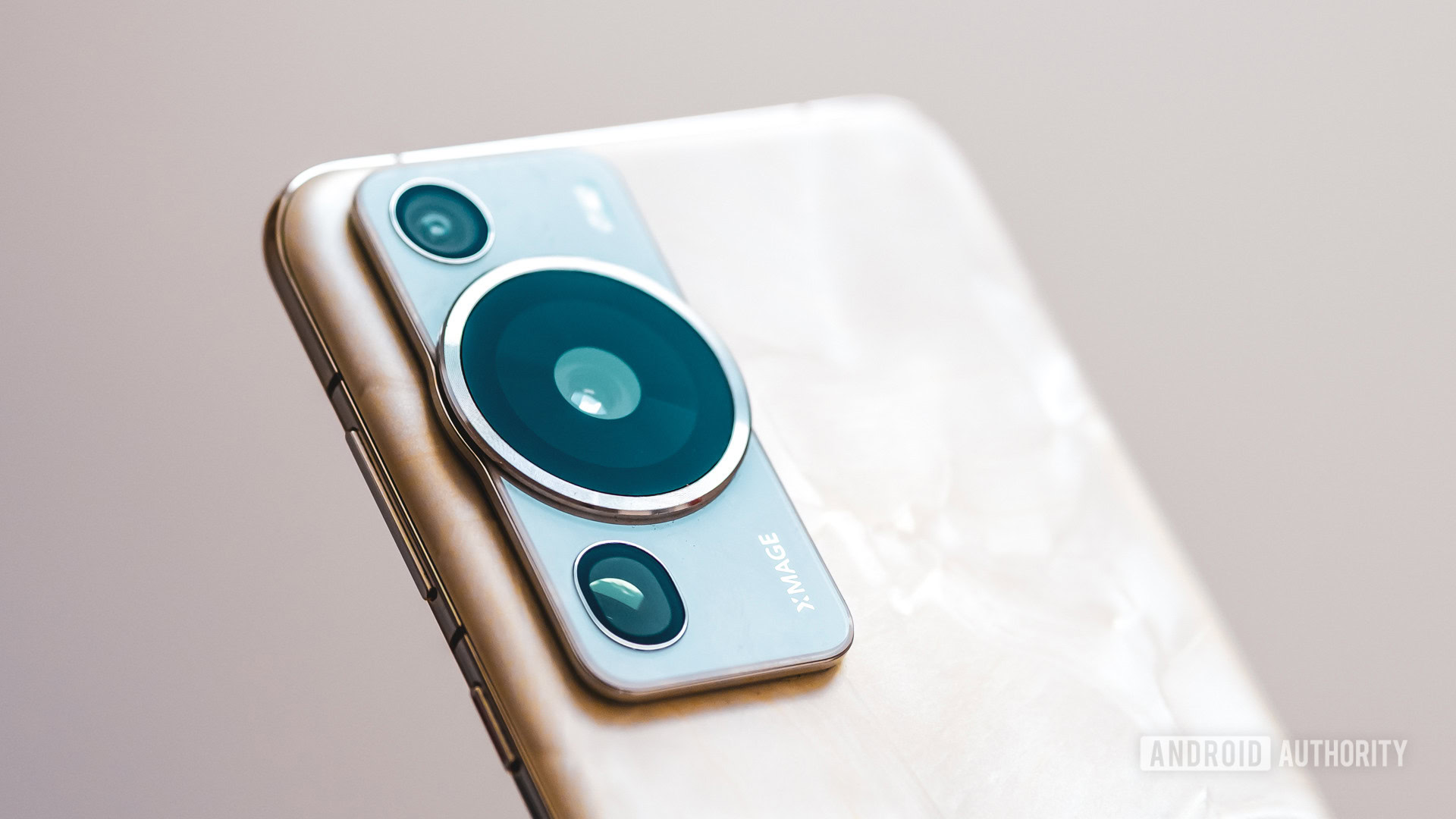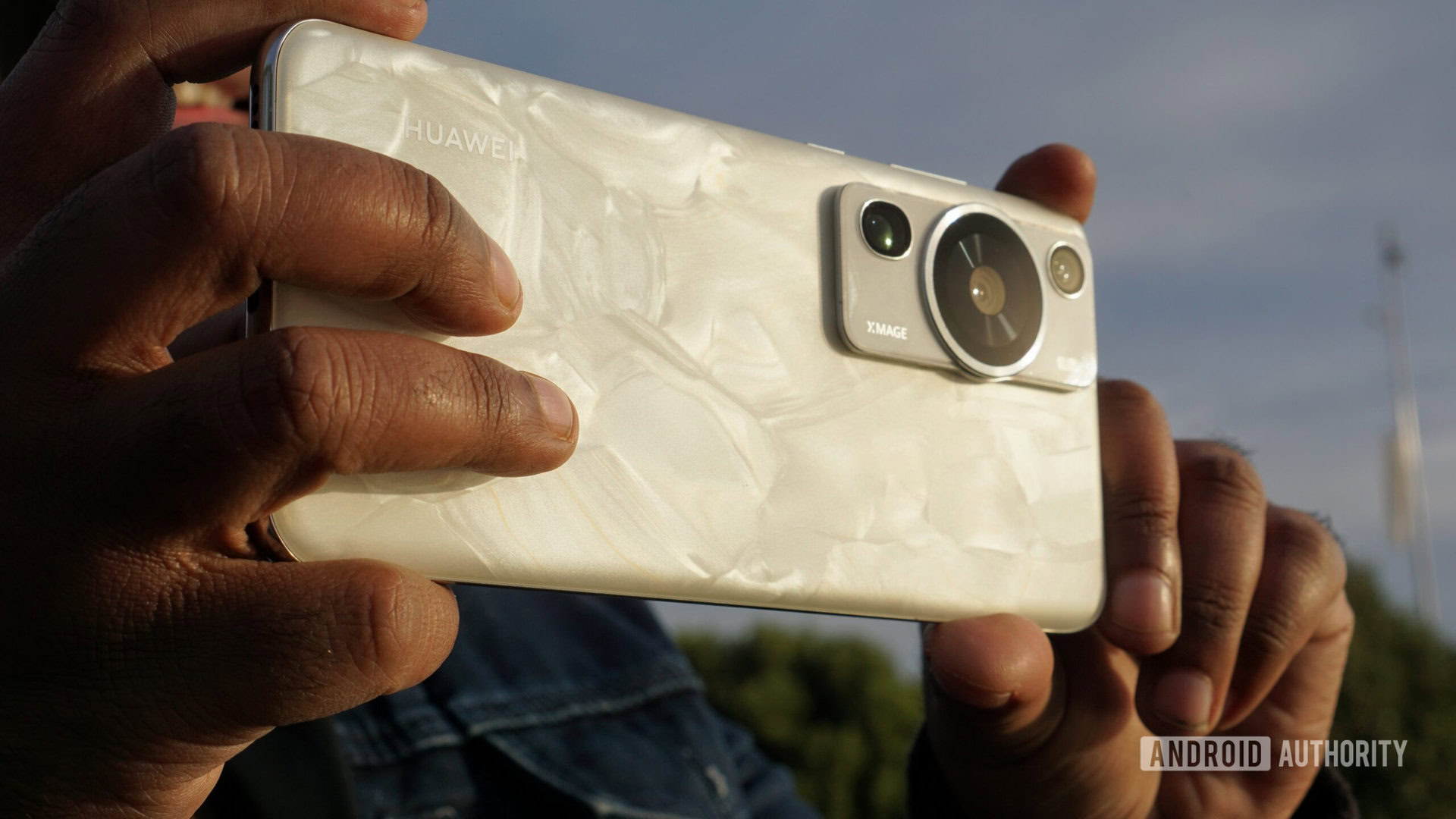Affiliate links on Android Authority may earn us a commission. Learn more.
I want this camera experience on future flagships
June 25, 2023

The best smartphone cameras have several different approaches to zoom these days. For example, Samsung is content to offer dual zoom cameras (3x and 10x), Google offering a single 5x camera, while several other brands stick to 2x to 3.5x tele cameras.
After several weeks of using the HUAWEI P60 Pro, I realized that I’d love to see this particular telephoto camera experience on more smartphones. Allow me to explain why.
The best party trick: Macro via the tele camera
The P60 Pro ships with a 3.5x telephoto camera system that can take macro shots too. We don’t see this often; it’s a technical challenge to bring close-range focus to complex periscope/telephoto camera systems, owing to their long focal lengths and complex lens designs. It’s far easier to enable macro functionality on ultrawide shooters with their short focal lengths, but snaps via these cameras usually see far more perspective distortion.
Still, this isn’t the first time we’ve seen macro mode via the telephoto camera, as the Xiaomi Mix Fold previously offered this feature. But it’s still a nifty addition here, meaning you don’t need to get extremely close to a subject to get a great macro shot like you need to do with an ultrawide camera or dedicated macro lens. This has the benefit of not potentially casting a shadow on the subject or scaring it away if it’s an insect or animal. Check out the gallery above for some samples, while the second image below shows just how far away I was from the subject.
Using the tele camera for macro shots also means awkwardly crouching for a few seconds to get a close-up shot is now optional. And that’s a good thing because my knees just aren’t what they used to be.
HUAWEI has also made several software tweaks to take advantage of this super macro mode. For one, the mode defaults to the 3.5x camera, even though you can switch to the usual ultrawide camera for traditional macro snaps. It’s clear which camera HUAWEI wants you to use in this mode, but it still caters to your preference.
The HUAWEI P60 Pro takes macro shots via the telephoto camera, complete with full autofocus capabilities, making for a more convenient experience.
Furthermore, the phone provides manual focus adjustments and can focus on subjects from just 10cm (3.9 inches) away. Manual focus is a big win, as several flagship phones can have finicky autofocus when trying to shoot a macro snap via the ultrawide camera or tele lens.
But the ability to focus on subjects from 10cm away is also welcome, as conventional tele cameras require you to take several steps back. HUAWEI also offers a 10x option here and while these results aren’t usually wallpaper-worthy, at least you’re not getting a blurry result like the Pixel 7 Pro. In this case, the Pixel defaulted to a 5x crop from the primary camera (the P60 Pro stuck with the tele camera) but switched to the periscope lens for the 10x version. The 5x periscope camera was simply unable to focus on a subject as closely.
The P60 Pro tends to stick to a native periscope camera shot far more often, whereas Google’s phone is more inclined to crop from the primary or ultrawide sensor (as is the case below). As such, HUAWEI’s images are usually more detailed and less over-sharpened. Still, we sometimes see blurry edges and blown highlights that make the comparison closer than it needs to be. Nevertheless, the P60 Pro tends to retain a handy advantage. Check out the comparison below.
A great phone for low-light zoom
The P60 Pro’s tele camera also serves up a ƒ/2.1 aperture, which is reasonably wide for a 3x telephoto camera. By comparison, the Pixel 7 Pro’s 5x periscope camera has a ƒ/3.5 aperture, while the S23 Ultra’s 3x camera is ƒ/2.4 and the 10x periscope camera has a tiny ƒ/4.9 aperture. Of course, HUAWEI’s camera doesn’t have the same native zoom factor as rival brands. However, the wide aperture, in conjunction with OIS, an RYYB image sensor, and HUAWEI’s software smarts makes for low-light zoom that’s better than most.
Check out the comparison in mixed lighting below, with all phones using their telephoto cameras. The first comparison is between Google’s phone and the P60 Pro, taken at the native zoom level. Neither phone is horrible, but the HUAWEI clearly grabs more light and fine detail compared to Google, which smears away detail due to noise reduction.
Meanwhile, the second comparison shows the P60 Pro versus the vivo X Fold 2 in similarly mixed lighting. It’s clear that the HUAWEI image delivers far more legible text, much less blur, and a brighter overall scene. Of course, it’s worth noting that the vivo handset has a 2x telephoto camera that lacks OIS. But it’s still a notable comparison given the brand’s low-light credentials and a reminder that OIS is essential in a high-end camera phone.
The camera app admirably sticks to using the telephoto camera for all but the darkest zoomed-in scenes. This can backfire at times though. For example, the vivo phone switched to a crop from the main camera in the scene below, while the HUAWEI phone stuck with the telephoto camera. The results are much closer than you’d expect, but the P60 Pro shows more noise in the sky, artifacts above the window, and a smeared look in general due to the noise reduction algorithms. The vivo shot clearly isn’t perfect due to over-sharpening. But the fact that we’re talking about a telephoto camera versus a main camera is pretty impressive stuff.
Truth be told, low-light zoom seems to be one of several trends in the smartphone camera space in 2023. The OPPO Find X6 Pro, in particular, touts similarly great results with its 3x shooter. HUAWEI P60 Pro’s use of a wide aperture and innovative RYYB color filter keep it at the forefront of this fast-moving space.
Pretty good for regular zoom
This is a zoom-focused camera, after all, and the HUAWEI P60 Pro still delivers respectable image quality across various ranges, as you can see above. The Pixel 7 Pro and Galaxy S23 Ultra undoubtedly deliver better long-range zoom images (10x or higher), but I thought the P60 Pro delivered great results up to 10x.
HUAWEI is following a recent trend of adopting ultra-high resolution sensors (48MP or more), and these megapixels are put to good use to enable better hybrid zoom at distances far exceeding its 3.5x native zoom level.
Still, there’s a limit to how far software smarts can take you. As the comparison below shows, it’s really not much of a contest for Google at long range.
I want this versatile zoom camera on other phones

There’s no doubt that the P60 Pro’s telephoto camera is pretty brilliant, even if it isn’t the absolute best in every category. Samsung and Google have it beat for long-range zoom, 3.5x macro shots aren’t flawless, and the camera unsurprisingly doesn’t always hold up in very low light compared to primary camera crops from other phones.
A single versatile camera is better than two or three inferior ones.
Nevertheless, the P60 Pro makes a strong argument for having the most versatile telephoto camera experience of any phone so far. I’m a huge fan of the Galaxy S23 Ultra’s 10x camera, but I would love to see Samsung offer a similarly versatile shooter for its 3x lens. After all, the ability to take great-looking macro, low-light, and long-distance photographs from a single lens is incredibly useful and helps capture great-looking photos no matter the conditions.